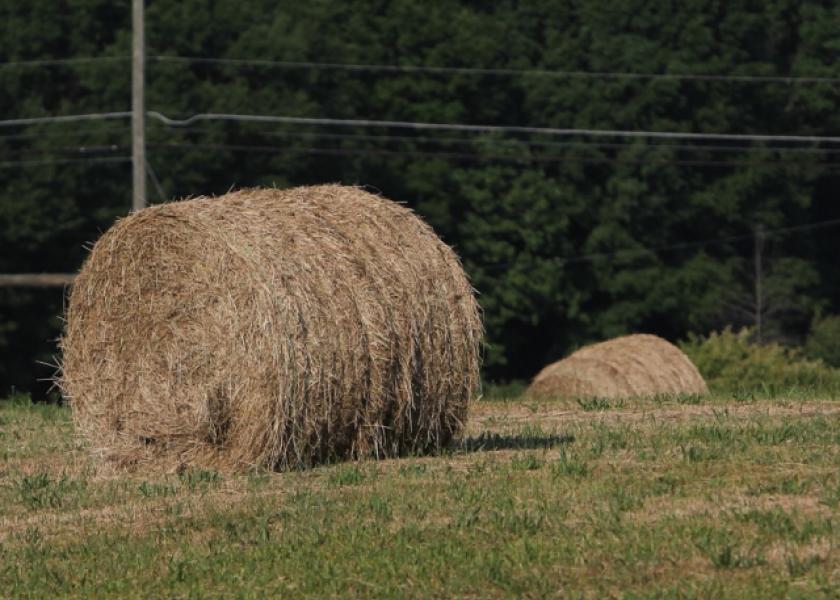Be Careful Baling Pastures

By: Travis Meteer, University of Illinois Extension
While I think everyone should have some hay on hand for emergency feeding, baling pastures may not be the best option. Forecasted dry weather makes it easier in some minds to cut hay and bale it up… because it won't get rained on. However, that weather pattern is not favorable to pasture regrowth.
Hot, dry weather does not favor good regrowth of cool season grasses, which make up the majority of Midwest pastures. The heat and sunlight penetration will raise soil temperatures more quickly than a covered, shaded soil. Obviously, evaporation and rising soil temps hurt soil biology and regrowth of cool season grasses.
Baling removes nutrients. If the hay is not fed in the area harvested, nutrients have been removed from that area of the pasture and may cause future losses in productivity.
If you need hay and know you will need more hay, consider purchasing some. You are not only buying feed, but also nutrients that can add to your land's fertility.
Baling pastures early in the spring can be successful. Baling a designated area of a pasture for emergency hay may be a good option. It may offer an area to apply manure from lot feeding that was unable to be applied to row crop fields before planting. You may want to purposely stunt the cool season grasses in effort to seed and establish warm season grasses in this area of your pasture.
It is important to be mindful of the downside to baling pastures. Hay is expensive to put up and feed when labor and feeding waste is accounted for. Purchasing hay may be a good option. The worst thing you can do is bale too much pasture that forces feeding hay in the summer due to poor pasture production.







